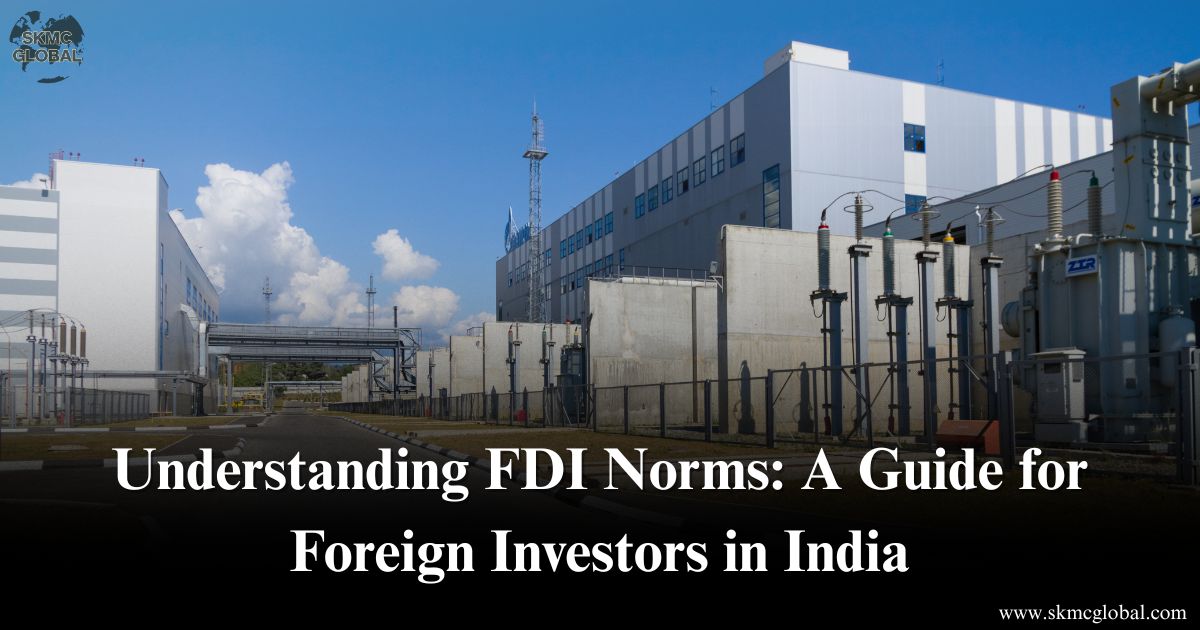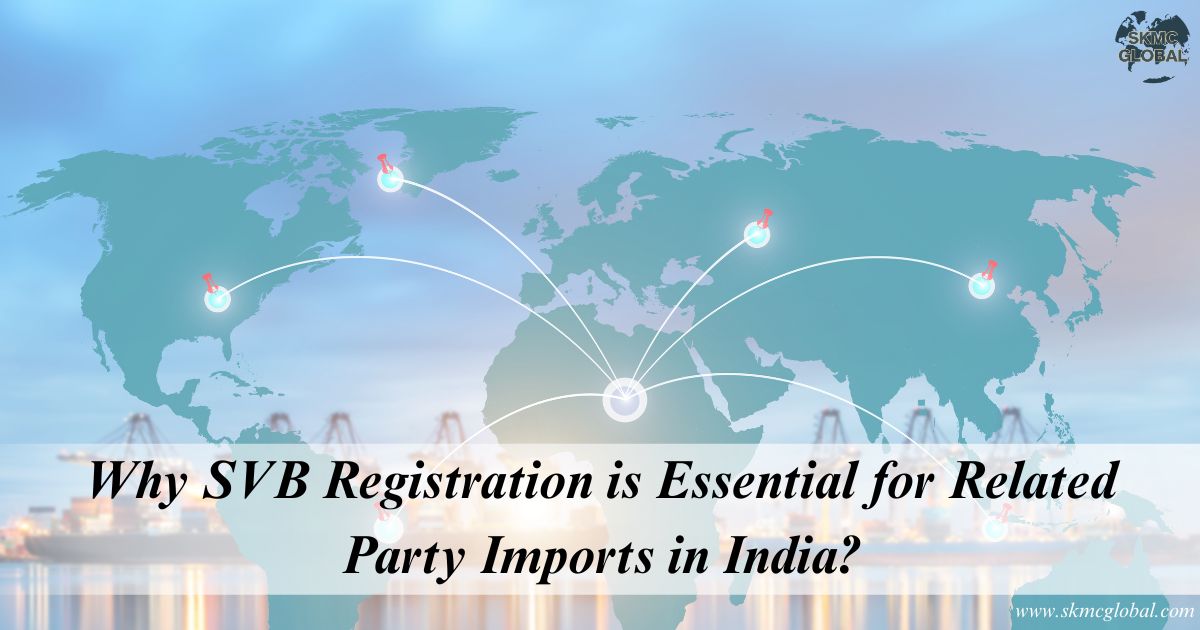
India’s Competitive Edge in Manufacturing: What Foreign Investors Need to Know?
In this evolving world of manufacturing, India is fast emerging as a preferred investor destination for establishing industrial operations. With the world already focusing on China as the world manufacturing hub for some time now, however, change is taking place—and India is at the helm of affairs. With international foreign investors looking for long-term growth, efficient operations, and favourable market access, India presents a competitive manufacturing offer.
But why does India have a competitive advantage when it comes to manufacturing? How do foreign investors approach the Indian market? This article deconstructs India's strengths and offers a practical guidebook on what investors from around the world need to know.
India's Manufacturing Potential: The Big Picture
India's manufacturing industry is a critical support for the economy of India. Currently, as of 2024, it accounts for around 17% of the GDP with ambitious government planning to grow the same to 25% in the near future. With policy change, infrastructure development, and international collaborations, India plans to emerge as a world manufacturing hub.
Programs such as "Make in India", PLI (Production Linked Incentive) Schemes, and Ease of Doing Business reforms are revamping India from a cost-oriented outsourcing center to a value-oriented manufacturing destination.
What Makes India Competitive in Manufacturing?
- Cost Advantage with Skilled Workforce
- Vast and Expanding Domestic Market
- Policy Support and Government Incentives
- Production Linked Incentive (PLI) schemes in 14 sectors such as electronics, pharma, textiles, and renewable energy
- Lower corporate tax for new manufacturing firms (as low as 15%)
- Simplified approval procedures through single-window clearances
- Industrial corridor development, e.g., the Delhi-Mumbai Industrial Corridor (DMIC)
- Strategic Geographic Location
- Diversification out of China
India has one of the lowest labour costs among large economies, but boasts an enormous talent pool of skilled engineers, technicians, and semi-skilled workers. With more than 4 million STEM graduates graduating each year, businesses can gain access to a technically qualified population at one-tenth the cost in the West.
Also, English language skills and a youthful population (median age of around 28) make India a long-term magnet.
India, with its over 1.4 billion people, is not only a manufacturing center—it's a massive consumer market too. Automotive, electronics, pharma, and consumer goods sectors have robust domestic demand, enabling companies to produce and sell locally.
This supply and demand within one country lowers logistics costs and enhances profitability.
Government of India has introduced a range of manufacturing-oriented policies in recent times with the objective to lure foreign investment. Prominent among them:
These reforms are focused on lowering entry barriers and compliance complexity to ease doing business by foreign companies.
India's placement in South Asia presents it with the strategic location for the export of goods to Southeast Asia, the Middle East, and Africa. With over 12 major ports, extensive road and rail connectivity, and strengthening airport connectivity, India is providing robust logistic capability for international supply chains.
Apart from that, Free Trade Agreements (FTAs) with ASEAN countries and negotiations with the EU and UK will enhance export competitiveness.
Post-pandemic geopolitical realignments and the imperative of China+1 strategies have motivated multinational companies to diversify their base of manufacturing. Size, talent, and market-offering India is a favourite among them.
Technology leaders such as Apple, Samsung, and Toyota have already registered their presence in India, demarcating its increasing significance as a second factory base.
Key Sectors for Investment
Although the manufacturing process of India permeates industries across a broad spectrum, there are some particular industries most attractive to overseas investors:
- Electronics & Semiconductors: India is transforming itself into an offshoring hub of global electronics with increasing smartphone and chip assembly plants.
- Automotive: Strong OEM and component production base, India is also establishing electric vehicle (EV) production.
- Pharmaceuticals & Healthcare: Preferred as the "pharmacy of the world", India provides inexpensive API and generic drug production.
- Textiles & Apparel: Low cost of labour and export incentives make this industry a favourite among international apparel brands.
- Green Energy & Solar Manufacturing: India plans for 500 GW renewable energy capacity by 2030 and is making clean tech investments on a large scale.
What Foreign Investors Need to Know?
- Regulating Environment
- Companies Act, 2013
- FEMA (Foreign Exchange Management Act)
- GST and taxation legislations
- Labor legislations (state-wise varying)
- Environmental legislations
- Appointing legal and regulatory consultants is recommended to navigate these segments smoothly.
- Selection of Proper Mode of Entry
- Foreign firms may enter India through:
- Wholly Owned Subsidiary
- Joint Venture with Indian Partner
- Manufacturing under license/franchise
- Contract Manufacturing Agreements
- State-Level Incentives and Infrastructure
- Intellectual Property (IP) Protection
- Enrol patents and trademarks upfront
- Employee confidentiality and non-disclosure agreements
- Attempt to form tech-based JVs or licence deals with robust legal contracts
- Cultural and Operating Synergism
Even though India has made many processes simple, information regarding local and central regulations still takes precedence. These include compliance with:
All models have regulatory and strategic implications of their own. Issues such as control, capital outlay, protection of IPs, and tax risk must impact this decision.
A few Indian states have customized incentives to attract industry investment—capital subsidies, tax incentives, and rates of subsidized land. Tamil Nadu, Gujarat, Maharashtra, and Uttar Pradesh are strongly encouraging industrial parks and SEZs.
Site analysis from a logistics, availability of labor, and industry orientation perspective can add substantially to the effectiveness of operation.
Overseas investors typically worry about protection of their innovation and technology. India has tightened its IP regime, but companies need to:
The business culture in India is distinct—relationships take vital stage, and multiple stakeholders can be consulted to make decisions. Cultural empathy, local leadership development, and good governance can help enable integration and long-term success.
India's manufacturing strength is based on cost competitiveness, technical competence, huge market, and enhanced ease of doing business. As a destination for foreign investors in terms of supply chain diversification, lowering the cost of production, and accessing a high-growth market, India is no longer a choice—it is increasingly becoming a strategic imperative.
But to thrive in India's manufacturing sector, investors need to peer more deeply than superficial opportunity evaluations. Conducting good due diligence, having the correct local partners, and aligning with compliance requirements are all critical initial steps toward a profitable, successful presence.
If targeted with the appropriate strategy, India presents a unique combination of opportunity and scale few markets can equal in the worldwide economy of today.
Recent Posts
-
 India’s Competitive Edge in Manufacturing: What ...
Jun 09,2025
India’s Competitive Edge in Manufacturing: What ...
Jun 09,2025
-
 Why Logistics Outsourcing Is the Future of Smart S...
Jun 02,2025
Why Logistics Outsourcing Is the Future of Smart S...
Jun 02,2025
-
 India's Foreign Trade Agreement and Investment Tre...
May 31,2025
India's Foreign Trade Agreement and Investment Tre...
May 31,2025
-
 Differences Between FCGPR and FCTRS:A Comprehensiv...
May 28,2025
Differences Between FCGPR and FCTRS:A Comprehensiv...
May 28,2025
-
 Understanding FDI Norms- A Guide for Foreign Inves...
May 29,2025
Understanding FDI Norms- A Guide for Foreign Inves...
May 29,2025
-
 What you need to know about india's special econom...
May 27,2025
What you need to know about india's special econom...
May 27,2025
-
 Understanding ODI (Overseas Direct Investment) Und...
May 26,2025
Understanding ODI (Overseas Direct Investment) Und...
May 26,2025
-
 How to Track AEO Registration Application and Chec...
May 22,2025
How to Track AEO Registration Application and Chec...
May 22,2025
-
 Benefits or compliance under Indian Foreign Trade ...
May 20,2025
Benefits or compliance under Indian Foreign Trade ...
May 20,2025
-
 AEO v/s Non-AEO: Key Differences and Why Your Busi...
May 19,2025
AEO v/s Non-AEO: Key Differences and Why Your Busi...
May 19,2025
-
 Why SVB Registration is Essential for Related Part...
May 19,2025
Why SVB Registration is Essential for Related Part...
May 19,2025
-
 How Mutual Recognition Agreements Augment AEO Cert...
May 15,2025
How Mutual Recognition Agreements Augment AEO Cert...
May 15,2025
-
 Customs Streamlining Refund Processes Through Auto...
Mar 17,2025
Customs Streamlining Refund Processes Through Auto...
Mar 17,2025
-
 Ekal Anubandh-Single Unified Multi-Purpose Electro...
Mar 06,2025
Ekal Anubandh-Single Unified Multi-Purpose Electro...
Mar 06,2025
-
 Revised guidelines on SVB assessment and its speed...
Aug 26,2021
Revised guidelines on SVB assessment and its speed...
Aug 26,2021
-
 5 ways about how you can fast track your SVB regis...
Jul 21,2021
5 ways about how you can fast track your SVB regis...
Jul 21,2021
-
 AEO Registration in UAE...
Nov 16,2021
AEO Registration in UAE...
Nov 16,2021
